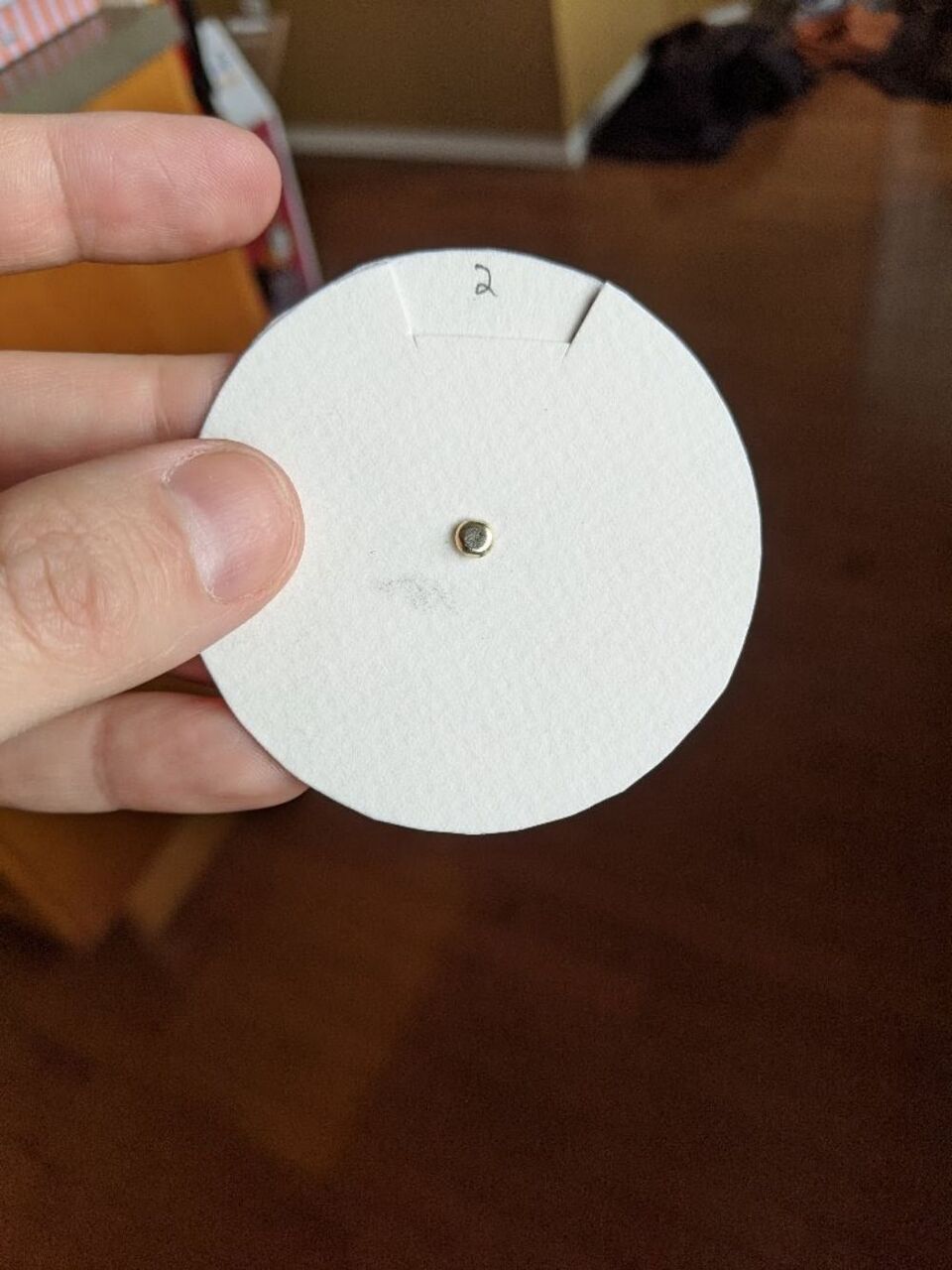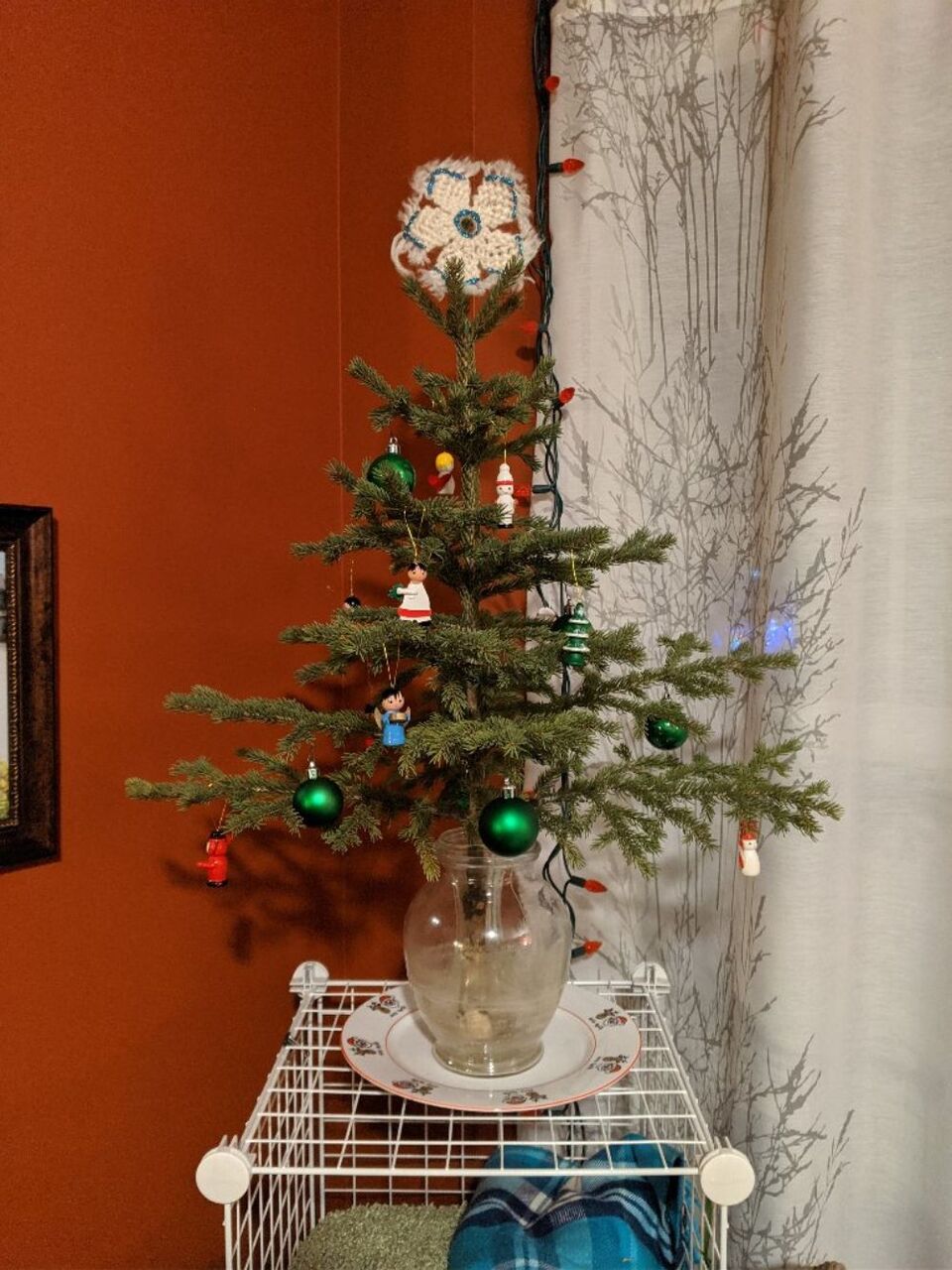- (https://b-ark.ca/ksKKwg)
I’m riding in the 2025 Enbridge Tour Alberta for Cancer, raising money for the Alberta Cancer Foundation, and have so far raised $2,744, exceeding my $2,500 goal and surpassing my 2024 effort!
Help me by donating here
And remember, by donating you earn a chance to win a pair of hand knitted socks!
- (https://b-ark.ca/csc_Yw)
I don’t agree with all the advice here, but this is another reason to have my own blog, authored in Markdown, converted to static HTML and CSS.
- (https://b-ark.ca/C0WGO4)
“Don’t be evil.” I joined Google in 2008, when those words still mattered. Here’s my story, in my own words.
Reinventing my blog
Most of what you see from me starts on my blog. Tweets, photos, or articles, I post them on my blog and syndicate. Part 1 on why and how!
The idea
If you’ve been paying attention to my writing lately, you’ll notice a theme. Toward the end of November I got it into my head to rebuild my blog for reasons that, in hindsight, I don’t actually remember.
At the time my main goal was to change the technology over from an old blog engine to something a bit more modern. But as I thought more about what I wanted for my blog, and read more about the IndieWeb movement, I realized my idea of what a blog could be was incredibly limited.
To their great credit, modern walled garden web services have given us with a lot of ways to express ourselves:
- Short notes (tweets, status updates)
- Long-form content (blog posts, articles)
- Photos
- Reactions (likes)
- Shares (bookmarks, retweets)
Not to mention more specialized status updates like what we’re reading, what we’re listening to, etc.
Each of these represents a piece of content we’re creating and publishing. We may not think of it that way because firing off a tweet or writing a quick status update is so easy. But they’re all just alternative formats for self-expression.
Unfortunately, as I’ve noted previously, because these are each their own walled garden, this content is split up and spread out across many services. At best this is annoying! At worst, it’s a great way to ensure that the things we write or post could get lost someday when those services inevitably die.
And then, as I read more about the IndieWeb, I realized I’d been thinking about my blog all wrong.
Yeah, sure, traditionally blogs were the home primarily for long-form content. But it’s my blog. It can be whatever I want it to be. So, why not turn my blog into the place where I post all of the things! And then, after authoring on my own site, automatically syndicate to those social networks!
Continue reading...- (https://b-ark.ca/YYmiMM)
In 2019 I started to repair my clothes instead of replacing them. Not only is this cheaper and more sustainable, I also get to brush off my sewing skills!
- (https://b-ark.ca/2a0Coo)
#nostalgia is a dangerous drug. I don’t tend to romanticize the past, but as I get older and more and more of my past is memorialized on the web, it’s really easy to fall down the rabbit hole. Rewatching #HaltandCatchFire definitely doesn’t help!
- (https://b-ark.ca/uMwYus)
Currently reading</span> The Way of Kings
<span>(<a href="https://en.wikipedia.org/wiki/The_Stormlight_Archive">The Stormlight Archive</a> #1.0)</span>by
(9780765326355) </span>
- (https://b-ark.ca/KU04wG)
I’ve been rewatching “Halt and Catch Fire”, and what I forget is, in the background, folks like Chuck Peddle, creator of the 6502, were the giants on whose shoulders Jobs and Gates stood. Thank you, Chuck!
Personal Archiving and the IndieWeb
The indieweb is about controlling your identity. But it’s also be a great way to claw back all that content I’ve been scattering across the web so I can get better at archiving!
Our data, scattered
A while back I started to take an interest in the topic of personal data archiving, and in particular how the topic intersects with the various social media platforms that so many of us interact with. The simple fact is that so much of who we are–the things we write, the photos and videos we take, the people we interact with, our very memories, as Facebook likes to remind us–are locked up in a bunch of different walled gardens that are difficult to escape, both technically and due to the powerful social pressures that keep us on these platforms.
I like to think of the traditional photo album as an interesting contrast.
It used to be that we collected memories in these books, and stored those books on a shelf. There was some real downsides to this approach! It’s a pain to add stuff to them (I have to “print” photos??) They’re difficult to share and enjoy. They’re single points of failure (think: house fires). They require intentional acts to ensure preservation. The list goes on.
But, they were ours. We owned them. We could take those photos and easily copy them, share them, rearrange them, archive them, and so forth.
Now imagine that you collected all your photos in a photo album that you could only store and access from a vault being run by a private company. The company would ensure the photos were protected and stored properly, and they provided a really nice, simple mechanism to easily add photos to your album right from your phone! That’s really nice! But if you wanted to look at those photos, you’d have to go to the vault, enter your passcode, and then you could only look at them while you were in the vault. And if you wanted to get a copy of all of those photos for yourself, well, you can, but it’s ugly and complicated and designed to make it minimally possible and maximally difficult.
Next, imagine the corporation changed their policies in a way you didn’t like. Or imagine that corporation went bankrupt. Or experienced a fire. Or you lost the passcode for that vault. Or a loved one passed away and didn’t store the passcode in a safe place.
What then?
Today, we don’t just lock those photos in one vault run by one private company. We lock those photos in many vaults, spread out all over the place. In doing so, we dramatically increase these risks, because instead of just one company failing or one account that we might lose access to or one set of terms of service we need to worry about, it’s many.
All the while we fragment our identity, spreading ourselves thin across the internet, which makes it extremely difficult to preserve all of those memories.
So what can we do about it?
Continue reading...- (https://b-ark.ca/EgkAuu)
I think I’m starting to understand the attraction of retirement, or at least sabbatical. Knowing I can just read or write or listen to music or play guitar and not feel guilty about the other things I’m not doing is just wonderful!
- (https://b-ark.ca/A8W80_)
Finished </span> <a class="p-name" href="https://en.wikipedia.org/wiki/Tiamat%27s_Wrath">Tiamat's Wrath</a> <span>(<a href="https://en.wikipedia.org/wiki/The_Expanse_(novel_series)">The Expanse</a> #8.0)</span>by
(9780356510330) </span>
Five years in Product - Leadership
Continuing my little retrospective writing exercise on my journey in product management, in this part I wanted to talk a bit about my (bumpy) path to better understanding the nature of leadership.
This is part two on a series of posts on my transition to Product Management. If you’d like to see where this series began, feel free to checkout part one.
As I’ve gone back and looked over some of the email traffic from my first couple of years in my role as Product Manager, one of the most obvious things that stands out is just how much was going on at the time (and how little I’ve apparently retained)!
The backdrop of this period was a parallel effort in the company to:
- Modernize our software development practices by moving to a process built on Agile Scrum, and
- Shift way from our custom, consultative software development model to a product-centered approach focused on broader market needs.
Either one of these would be a large, challenging transition. Looking back, attempting to tackle both at the same time was borderline insanity!
Looking more closely at the transition to Product-oriented development, this is also seems to be a pretty common phase in the startup life-cycle.
As I’ve talked to other folks in the industry, I’ve noticed that many startups, particularly those in the B2B space, initially succeed by developing a solution for a couple of “whales” that serve as an essential lifeline that keeps the company operating. Over time, as those successes beget more successes, the company can step back and focus more on the market than individual opportunities, and at that point, a pivot to a Product-centric development process makes a lot of sense.
The trouble is, this is often not an easy transition. Ignoring the challenges in shifting the entire mindset and culture of an organization, there’s the basic politics of handing off responsibility for feature selection and prioritization from technology leadership to product leadership. As you can imagine, this transition can be very difficult if not handled delicately.
Continue reading...- (https://b-ark.ca/UgeG6A)
Currently reading</span> Tiamat’s Wrath
<span>(<a href="https://en.wikipedia.org/wiki/The_Expanse_(novel_series)">The Expanse</a> #8.0)</span>by
(9780356510330) </span>
- (https://b-ark.ca/QO4KM4)
I don’t like the idea of getting a real Christmas tree for the house… messy, maintenance, and you gotta dispose of them. But a tiny one…
- (https://b-ark.ca/s8oQSM)
Great piece on Brave. The Freeloading argument isn’t accurate, but the rest of it is spot on and highlights how Brave is regressive and disempowers content creators.
- (https://b-ark.ca/qmoGIS)
Absolutely fantastic podcast about the rise and fall of Rob Ford. It shows the power of populism and how in many ways Ford presaged Trump.
- (https://b-ark.ca/kiI8uo)
Posts like this make me want to finally learn how to program the FPGA on my shelf! So cool!
- (https://b-ark.ca/CEeUau)
I think I’ve ironed out all the issues and I’m now publishing everything–including notes like this–to my own blog (b-ark.ca), feeding into micro.blog (micro.blog/brettkosinski), auto-syndicating to Twitter!
Five years in Product - The Pivot
It’s been over five years since I moved into software product management and it’s been quite a ride. Given it’s nearly the end of 2019, I thought it would be fun to do a little retrospective! This is part one: the pivot.
Anyone who knows me knows that I basically grew up around computers. I began my lifetime of coding very early on, beginning with a BASIC interpreter and a library book and rapidly progressing to HyperCard, Logo, and then eventually Turbo Pascal. By high school I was one of a few obsessives who spent all their time in the computer lab where, if I wasn’t playing games or messing around with the equipment, I was writing code.
I was, in short, a computer nerd.
And, while my professional life has moved in a different direction, this still true to this day. I honestly doubt there’ll ever be a time when I’m not tinkering away on one project or another. Heck, the relaunch of this blog was as much an excuse to mess around with Jekyll as anything else…
But the idea that I would ever be anything but a “computer guy” never would’ve crossed my mind. I suspect my past self would be rather surprised by where I now find myself!
Continue reading...




